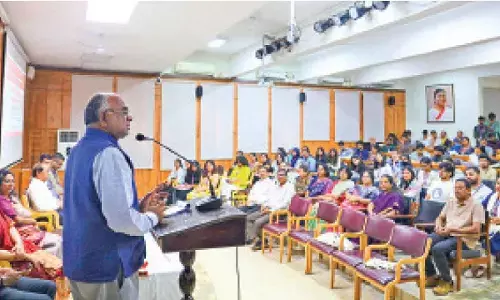Making post-retirement life productive for the country

Making post-retirement life productive for the country
Population of elderly people in India by 2050 will reach a gargantuan figure of 300 million India needs to harvest their financial potentials and empower them at the same time
While contemporary discourse predominantly focuses on India being a young country, there is little talk about people on the other end of the age spectrum. There are global demographic shifts; BBC reports how in 1960, those older than 65 made up just 4.9 per cent of the global population, but by 2050, they'll account for a staggering 17 per cent.
As per census data, the population of the elderly in India has been continuously on the rise. In the first decade of the twenty-first century i.e. from 2001 to 2011, the number of people above 60 years of age went up from 77 million to 104 million comprising around 8.6 per cent of total population.
Simultaneously, the life expectancy has also substantially increased to around 70 years compared to about 63 years about a decade ago and estimates show that the population of elderly people in India by 2050 will reach a gargantuan figure of 300 million.
In the prevalent regimes of employment, this means that the 'retired' population in India shall be tremendous and a lot of older people will be left without opportunities to self-sustain. This is undeniably a cause for worry and merits discussions on ways out of an unfavourable demographic phenomenon.
Retirement does not imply a loss of employability and skill sets and several people who hit a declared retirement age are in perfect physical and mental conditions to continue contributing to the economy. Proclaiming them unemployable is a massive disrespect to human capital and the closing of a profitable avenue for the economy.
On an individual level, the elder populations in India are left to fend for themselves financially in the absence of substantial pension schemes and a substantive social security system in India. With potential health trouble, progressively increasing medical expenses and high rates for health insurance do not bode well for them.
Declaring an employable population retired also has negative consequences for the economy. As per the International Monetary Fund's reports and other publications, in Japan, pensioners make up 12.9 per cent of the labour force and its GDP has been among the slowest growing for the last 20 years and the impact of aging could potentially drag down Japan's average annual GDP growth by 1 percentage point over the next three decades.
Therefore, there is more reasons for nations to figure out ways to re-employ retired workers and generate more employment in its wake.
As noted by The Financial Express, a major global response to this potentially precarious scenario has been to progressively increase the retirement age, helping governments in keeping the pension system solvent while ensuring continued engagement and participation of seniors in the workforce.
The aforementioned publication mentions how Japan, for example, introduced a voluntary re-employment system for retirees who can and at will, join back the workforce as part-time employees with different work hours and wages.
This allows especially those willing to re-enter the workforce after retirement to invest in necessary skill upgradation and lead a healthier lifestyle. A similar policy in India can be crucial in letting people who are fully fit both physically and mentally and want to contribute to society more be hired on a part-time basis for jobs they have been perfectly doing for years.
This way, the expertise of senior workers shall continue to be harnessed for national and individual good.
The ravages of the pandemic led to an unprecedented deployment of technology and the consolidation of the work from home regime, which is ideal for engaging retired populations, as they can carry on tasks from the comfort of their homes. In fact, this has been a good bouncing back plan even in pre-pandemic times.
AARP Foundation documents the story of Jackie Booley who retired from her position as an AT&T call centre manager in 2007 and began working as a customer service agent from home, logging in about 24 hours each week at $9 an hour, answering questions and processing orders. This shift enabled Jackie to be her own boss while enjoying financial independence.
India needs to harvest the financial potentials the elderly hold and empower them at the same time, through re-employment or employment in alternative roles or on part-time basis. Done on a macro level, this shall revitalize the economy and also enable the elderly to keep themselves secure and independent.
The younger workers can keep benefitting from the experience of senior employees and India's burgeoning youthful demographic dividend can be backed by the competence of its most trusted and proficient workers. The young and the elderly can come together to catapult the Indian economy to new heights and this opportunity is ours to seize.
(The author is Founder Upsurge Global and President SAHE (Society for Advancement of Human Endeavour)
















